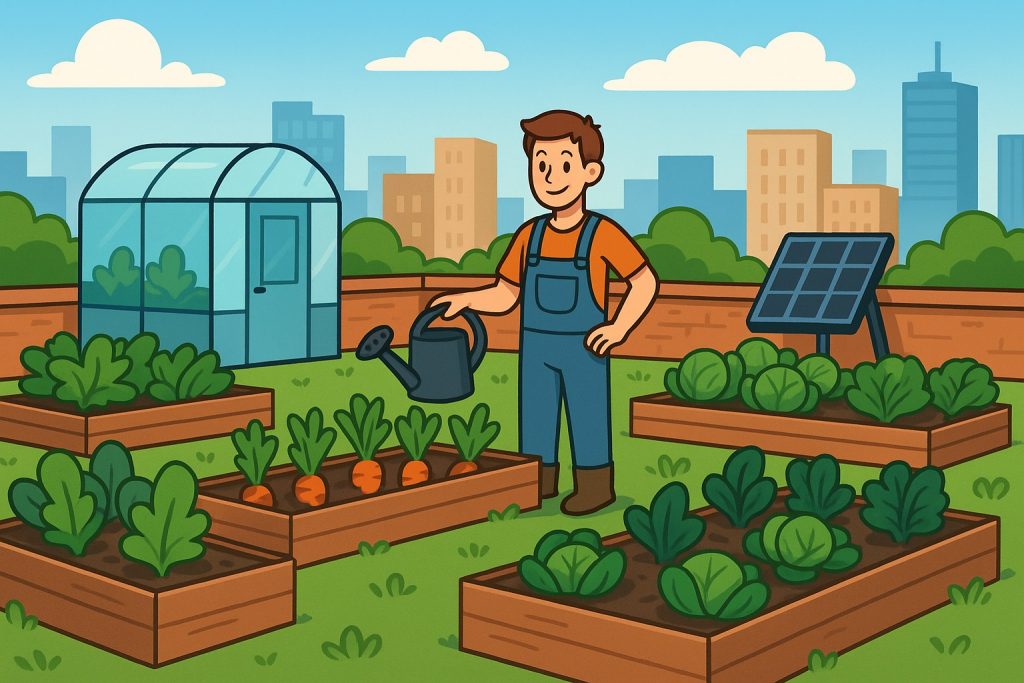As cities grow denser and space becomes limited, a quiet green revolution is taking root above our heads. Urban rooftop farming is transforming the tops of buildings into productive gardens, bringing fresh food, cleaner air, and stronger communities right into the heart of the city.
What Is a Rooftop Farm?
A rooftop farm is exactly what it sounds like: a farm built on the roof of a building. These can range from simple garden boxes with herbs and lettuce to advanced systems with irrigation, composting, and even small greenhouses.
Unlike traditional farms, rooftop farms use unused urban space, reduce the need for long-distance food transport, and often rely on sustainable practices.
Why Are Rooftop Farms Important?
- Local food production: Crops are grown where people live, reducing transportation and emissions.
- Climate benefits: Green roofs help lower building temperatures, reduce energy use, and absorb rainwater.
- Health and nutrition: City dwellers gain access to fresh, pesticide-free vegetables and herbs.
- Community engagement: Many rooftop farms become local hubs for education, volunteering, and food sharing.
Challenges and Innovations
Urban farming on rooftops isn’t always easy. Weight limits, water supply, and building codes must be considered. However, innovations like hydroponics, vertical farming, and lightweight soil make rooftop agriculture more practical and scalable every year.
In cities like New York, Paris, and Tokyo, rooftop farms are already supplying restaurants, markets, and even schools with fresh produce grown just a few steps away.
Glossary
- Rooftop farm — a garden or agricultural system located on top of a building.
- Hydroponics — a method of growing plants without soil, using nutrient-rich water.
- Vertical farming — growing crops in stacked layers to save space.


